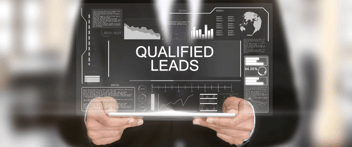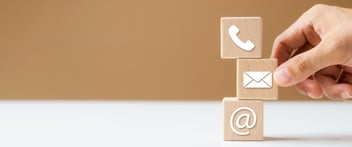Establishing Brand Personality: 5 Examples of Brand Humanization Done Right
The average American sees 4,000 to 10,000 ads per day. It would be an understatement to say that we’ve grown desensitized to almost all attempts to attract our attention.
In the wake of intense market saturation, successful brands are increasingly humanizing their communications to cut through the noise and make emotional connections with their audience. It’s a concept often referred to as “brand personality” (sometimes used interchangeably with the term “brand humanization”).
What is Brand Personality?
Brand personality refers to the characteristics and emotions customers associate with a brand. This is not to be confused with brand identity, which refers to the collection of elements that define the look of a brand.
Why Does Brand Personality Matter?
Brand personality can’t necessarily be measured through a given metric, but it absolutely contributes to the long-term success of your company. It’s the expression of your brand in the wild. It’s the way in which you directly interact with your audience, and the emotions they feel as a result.
Ultimately, it’s what makes your brand memorable and distinguishable from every other brand in existence.
So yeah, it’s kind of a big deal. The hard part? There’s no single formula for creating a brand personality that lasts. But we can take cues from the brands that know themselves and their audiences at a deep level. Read on to explore some brands that express themselves so well, it’s impossible to wipe them from your memory.
Duolingo: A Masterclass in Unhinged Brand Personality
It’s almost a given that if you’ve ever attempted to learn a second language, you’ve tried Duolingo. It’s a massively accessible product known for providing free, personalized learning experiences to audiences worldwide—garnering over 100 million downloads with a 30% user retention rate.
Behind Duolingo’s success—aside from being one of the first SaaS-oriented language learning products to market—is that it understands who it is, carrying that distinct brand personality wherever it goes. It’s unlikely that you will become fluent in a language just by using Duolingo, but it is a great way to break through the daunting feeling of starting the process. In fact, Duolingo makes it fun. It's that sense of fun that they translate so well into everything they do. From the gamification of their product with progress bars and badges, to the quirky characters representing the diversity of their global audience, and if you've been on TikTok, their completely unhinged owl of a mascot.
To say the least, this owl is a hoot, and is responsible for several viral moments that have kept Duolingo’s brand personality front and center in people’s minds.
Exhibit A: The Duolingo owl simping for Dua Lipa.
Exhibit B: An evil version of the Duolingo owl threatening users into better study habits.
Exhibit C: The Duolingo owl riding Barbie’s wave.
For almost any cultural touchpoint you can think of, Duolingo has found a way to make their brand personality part of the conversation—without seeming out of touch or cringe. They’ve kept their ear to the ground to capitalize on trends while they’re still trending, and have always led with the goal of entertaining (providing value) before selling.
But while leaning into the irreverent humor of TikTok has worked wonders for Duolingo in captivating a younger audience (the brand now has 7.6 million followers on the platform), you shouldn’t feel like you have to step into a giant owl suit to share your brand personality with the world.
Different strokes for different folks, right? If you can understand what makes your brand unique, what makes your audience tick, and where they spend their time, you’re sure to find a way of presenting your brand that is authentic and connects with your audience.
Let’s look at Ikea to examine more subtle ways of expressing brand personality.
Ikea: A Delightfully Normal Example of Brand Personality
Ikea’s tagline of “The Wonderful Everyday” perfectly encapsulates the essence of who they are. They’re the no-nonsense brand that immediately comes to mind when you don’t want to break the bank on a piece of furniture that takes 45 steps to assemble.
Ikea doesn’t win through flashy antics or trend-chasing. They win by thoughtfully connecting with the needs and desires of everyday people. From their in-store displays that actually feel “lived in”, to their 3D modeling app that lets you envision how a piece of furniture might look in your home, Ikea celebrates the mundane and the practical.
And while you may never catch them pining for Dua Lipa on TikTok, Ikea is not without their own sense of humor.
One of the most recent testaments to Ikea’s lived brand personality was their university starter kit offering in Canadian stores.
For the low price of $99 CAD (or $73 in USD), the bundle included several sets of cookware, cutlery, dishes, storage, and cleaning supplies—essentially, everything you could possibly need to stock a college pantry. This offering is just another example of Ikea going above and beyond to meet their audience where they’re at in life.
But let’s address the elephant in the room. Both examples of brand personality we’ve covered so far have been B2C. You might be wondering whether any of this applies when you’re marketing to other businesses. Queue the next (3) examples.
Hubspot, Slack, and Mailchimp: 3 B2B Brands That Are Anything But Boring
B2B doesn’t stand for boring to boring. Sure, B2C brands may have more flexibility in their brand personality with a broader and less focused target audience, but at the end of the day, you’re still marketing to humans.
You work in a business. Ask yourself: do you have emotions? Desires? Pain points? If anything, you might be more compelled by a clever ad because you’re in the weeds of gaining your audience’s attention every day—and you know how hard that is. So as you think about what differentiates your company, look to these 3 brands that are killing the brand personality game.
Another Helpful Tool From Hubspot, But Make it Fun
The founder of Hubspot, Brian Halligan, literally coined the term “inbound marketing.” Ever since, the company has been both a valued partner and thought leader to hundreds that have integrated the inbound movement into their marketing strategy, including Möve Marketing. As an expression of their brand personality, Hubspot has created several helpful tools for marketers over the years. Sometimes those tools are strictly practical, and sometimes, they inject excitement into our workday, such as their buyer persona tool. The tool’s interactive and colorful interface brings the buyer persona process to life in a way that almost feels like a character creation system in a game.
As small an initiative as this tool may seem in the grand scheme of things, it’s an excellent nod to Hubspot’s attention to detail and commitment to their distinct brand personality.

Slack’s Exceptionally Meta Mockumentary
Slack understands office culture. Their entire product is built around making interactions at work more human. So what better way to showcase their product than a talking head short a la “The Office”? (Death to meetings in the utility closet).
Mailchimp on the Mainstage
Email marketing and automation company, Mailchimp, is getting in on Super Bowl LVII this year with a particularly innovative demonstration of their product. They’re calling it “Play by AI.”
Throughout the game, Mailchimp’s AI will be generating email subject lines reacting to highlights (from the game and the commercials) that will be posted to their X profile (formerly Twitter) in real time.
This is a perfect example of the brand demonstrating its value in a unique and relevant way on the single biggest night of the year for marketers around the world.
Final Thoughts
Consistency, creativity, boldness, and deep knowledge of both themselves and their audience are traits that all of these brands share. By picking their own lane and sticking to it, they’ve crafted brand personalities that have stood the test of time.
If you’re feeling inspired and want to start injecting more of your brand’s personality into your communications, Möve can help. Drop us a line. We’d love to talk about your brand.




